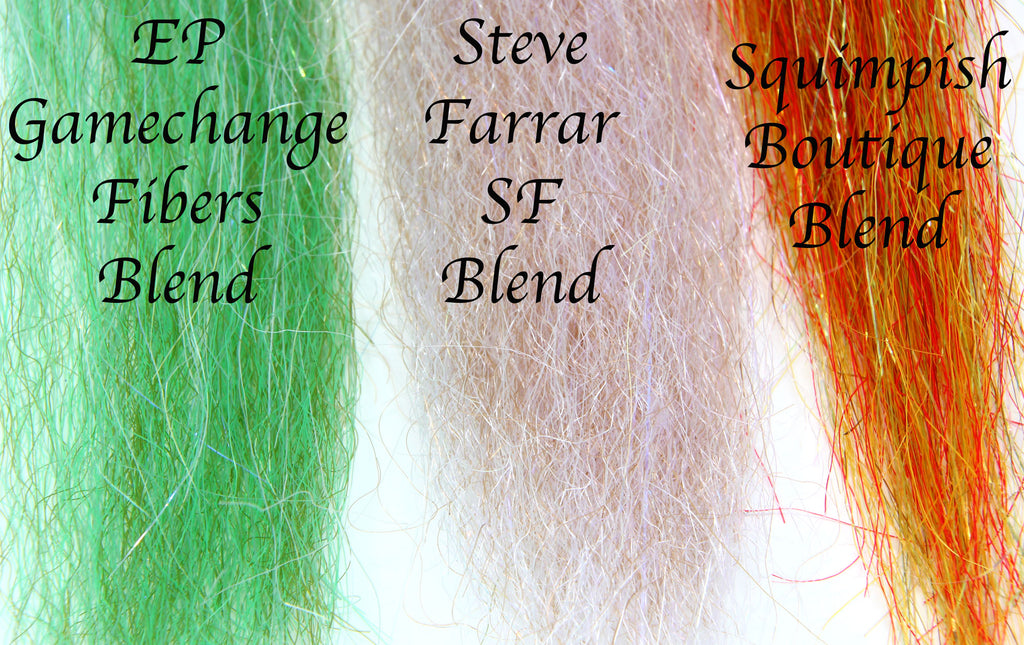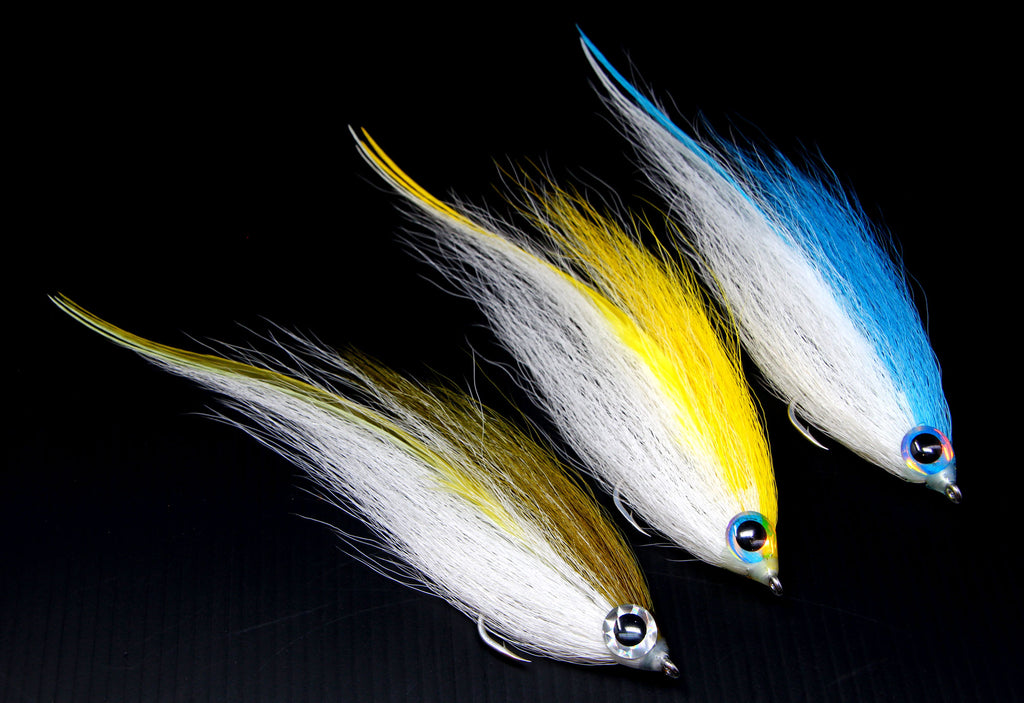Historically, fly tying materials consisted mostly of natural materials sourced from animals. With those resources dwindling and becoming harder to come by, a wider range of great options, and paired with the demand for fly tying materials seemingly increasing, synthetic fibers and other man made materials have become an integral part of the fly tying industry. In this article we will be talking about three of our favorite brands to compare and contrast the properties of the materials and when you might want to buy one over the other.
Our three most popular brands for synthetic fibers are undoubtedly EP, Squimpish, and Steve Farrar SF Blend fibers. Each brand offers an array of different products to be utilized in countless situations on the vice. We use each brand of materials in our shop flies, and through tying experiences and field testing, we believe these are products that must be in your stash of materials to work with. For the sake of this article we will be focusing primarily on saltwater and big game tying applications as that is where we personally use synthetic materials for the most.

EP fibers are a staple of saltwater fly tying and have an enormous reputation in the industry. Unlike Squimpish and Steve Farrar Fibers, EP also offers a large array of materials other than hair/fibers such as rubber legs, crab claws and eyes and bodies. When talking about the fibers EP offers, the three products you will hear about the most will be the original EP Fibers, 3-D Fibers, and the Gamechange Fibers Blend. The original fibers are matte with no flash and a crinkled texture with a single tone of color. The 3-D blends are very similar to the original except have multiple color tones. The game changer blends come with similar fibers, but with flash mixed in and I think a slightly more rigid feel than the original or 3-D. All of these products have their time and place. One of the most popular applications for the Original fibers and 3-D blends is to build bodies for crab flies. Both of these products are perfect options for this application. The gamechanger blends we feel are more for baitfish patterns. All 3 of the products we mentioned above come in uniformly pre cut packs of 9” long fibers.

In contrast, Squimpish fibers are a relatively small family owned company that almost exclusively make fibers for wings, DIY brushes, and hollow techniques. Squimpish offers synthetic hair, boutique (flashy) blends, and their own version of craft fur. They also regularly release new products and color options that keep things exciting. The two products we will be focusing on for the sake of this article is the Squimpish “Hair” and the Squimpish “Boutique Blends." The Squimpish “Hair” is a product that comes on a patch similar to craft fur, with fibers that range from 7”-10” long. The hair also comes with an under fur that is fantastic for bulkier hollow ties and creates more water displacement, as well as provides as a foundation to prevent the material from fouling. The hair is usually a blend of a couple different color tones but does not have flash incorporated. The “boutique blends” are a little shorter, coming in around 5”-8” long, but have angel hair flash accents blended into the fibers. These blends come in a bundle rather than a patch like the hair does. The “Boutique Blends” are what our All Points Squimpish Fiber hollow fly is tied with. Squimpish fibers take exceptionally well to hollow tie techniques as well as have some of the best movement from any fiber on the market, synthetic or natural.

Steve Farrar SF Blends have a strong reputation in the saltwater fly tying world. These fibers come in packs that are 10" long with flash blended into the fibers. The fibers are slightly rigid and have a crinkled texture which makes them the ideal fiber for building bulk on flies and preventing the fouling of other materials. SF blends are a great material choice to build a strong structure of a fly with. This material is extremely castable and does not absorb water whatsoever. These fibers are also available as brushes as well.

In conclusion all three brands make fantastic products that can be utilized in many different ways. For crab bodies, EP takes the cake. Though both EP, Squimpish and SF Blend fibers can be utilized for baitfish patterns, our opinion is that it is hard to beat Squimpish for hollow tie techniques and acheiving great movement. If trying to gain bulk on your fly, especially when tying large patterns without articulated shanks or extensions, Steve Farrar SF Blends are probably your best bet. All of the products mentioned are easy to work with, are extremely durable, and are blend-able, trimmable, and versatile. We offer several different products from each brand. Check out our newly updated online store and try them out for yourself!
Written By: Joe Webster
Read more









